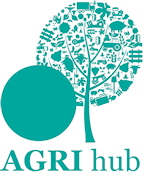Selling development land can yield valuable extra income and might sound straightforward, but there are significant tax implications to watch out for.
The key with any land development sale is to understand the implications early in the process, stresses Laura Wylie, senior tax manager at Old Mill agricultural accountants. “Every situation is different and could require things like restructuring of land ownership to avoid tax pitfalls.”
So what do landowners need to be aware of?
Sales of bare development land by sole traders and business partners normally incur Capital Gains Tax (CGT) at 10% up to the higher rate Income Tax threshold of £50,271 and 20% thereafter. However, where housing has already been built, the higher CGT rates for residential property apply (18% for lower rate taxpayers and 28% for higher rates).
“Landowners looking to build property rather than sell bare land to developers are potentially going to change the nature of the disposal from capital to income (as they may be seen as a property developer),” explains Mrs Wylie. “In this case, be wary of the higher 45% Income Tax and that there won’t be Business Asset Disposal Relief (BADR) or Rollover Relief (RR) available.”
BADR (previously known as Entrepreneurs’ Relief) means less CGT may need to be paid when selling all or part of a business. All gains on qualifying assets will be taxed at 10% – to qualify, sole traders, partnerships and businesses must have owned the asset for at least two years.
RR means that proceeds from the sale can be reinvested into new assets, delaying the CGT bill until the new assets are sold. To qualify, new assets need to be bought within three years of selling the old ones, the business must be trading at the point of both sale and purchase, and both assets must be used in a trading business.
If the land is held by a company, any gains are normally subject to Corporation Tax – at present this is 19% but come 2023 it will increase to 25%.
If a landowner sells a dwelling which has been their main residence throughout ownership, there could be scope to claim Private Residence relief (PRR) to reduce the amount of gain on which CGT is payable – potentially eliminating any CGT burden.
However, development land may not always be sold within a landowner’s lifetime. When it comes to farmland and property, Agricultural Property Relief (APR) will only apply to the agricultural value of land; all value above this may be exposed to Inheritance Tax (IHT) at 40% unless Business Property Relief (BPR) applies. Therefore, gifting land before death could be an option to maximise the availability of these reliefs.
“It’s also worth being mindful of how long any option or promotion agreement lasts – as no one wants to be unable to do anything else on their land for 20 years,” explains Mrs Wylie.
And while Stamp Duty Land Tax is a cost to the purchaser, it will likely filter down to the landowner in a reduced sale price.
So it’s important to get an accountant involved with the heads of terms and discussions at an early stage. “It can even influence the VAT levied on planning application fees,” says Mrs Wylie. “An accountant can highlight such tax liabilities and help with decision making to best benefit the landowner and their situation.”
- For more information contact Ben Carter on 07825 620052.





